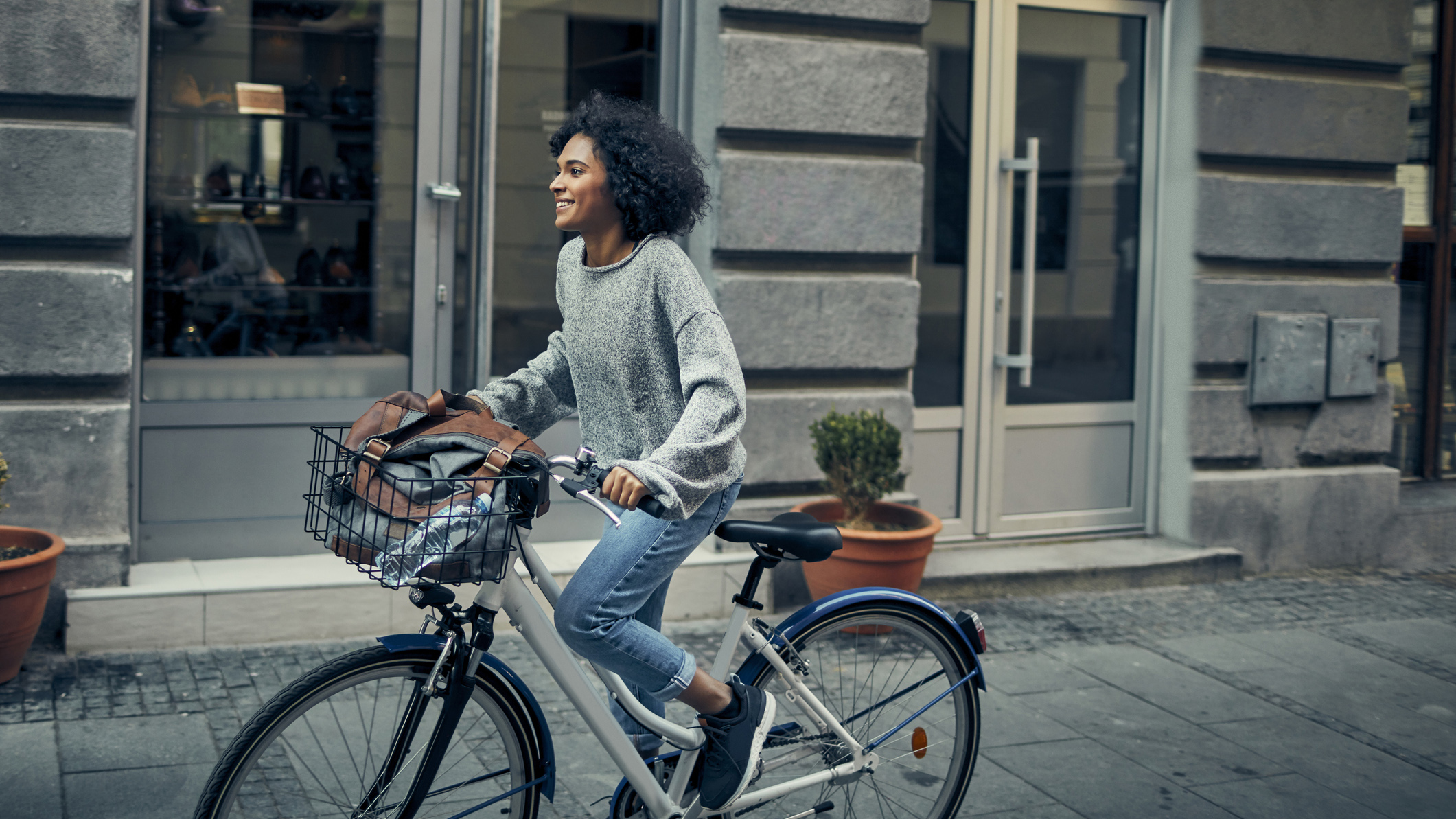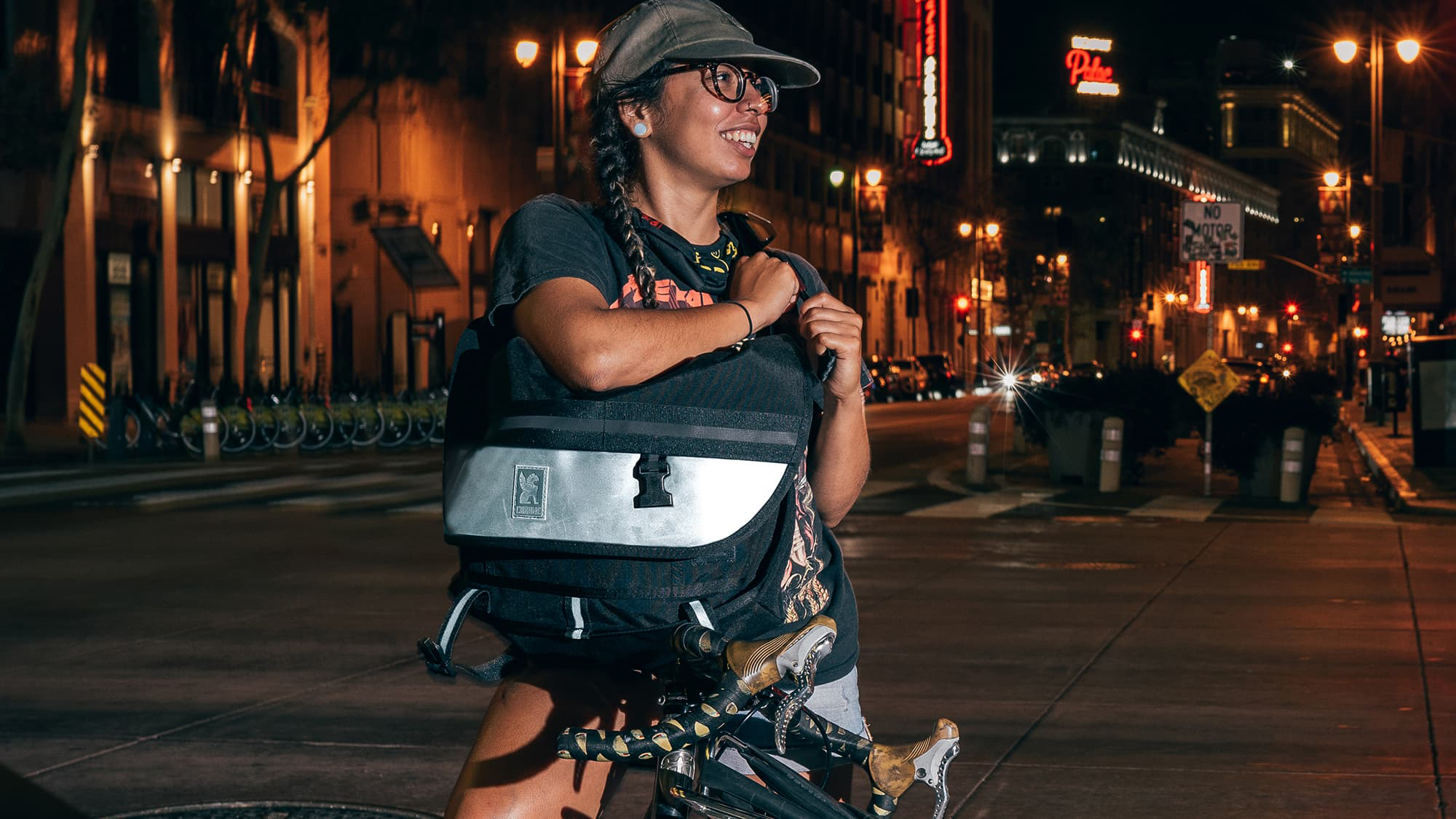

Despite the abundance of rentable e-scooters in every city that has a population of over 500 people, commuting to work with a bike is still all the rage. And if you're planning on cycling to work yourself, especially in the dark winter months ahead, here are five things to consider before you hop on the saddle.
We asked Elinor Baker, a professional cyclist and Laka ambassador, to share her best cycling commuting tips, the ones that helped her tackle morning traffic and the fear of losing her bike to thieves more efficiently. What does she think are the best ways to get ready to pedal to work on a regular basis?
"Commuting to the track by bike opened up a whole side of cycling that I hadn’t discovered", Elinor says, "Travelling by bike is a great way to immerse yourself in the environment, save money and keep up fitness."
Without further ado, here are the things to watch out for if you want the smoothest ride possible. Here are Elinor's top commuting tips to help you cycle to work with ease.
1. Be seen
Investing in some bright kit will make sure you’re visible when cycling around town. If a brand new wardrobe is too expensive, a lightweight gilet or jacket in a bright colour, preferably with some reflective strips will do the job.
Keeping it thin will mean it can be worn over any item of clothing without you overheating. When I commute to the track or gym over winter, I always use a bright backpack cover. The cover protects my kit from getting wet on rainy days, and also acts as a huge indicator to drivers that there’s a cyclist up ahead.
Front and rear lights are a no-brainer too. There are lots to choose from so make sure you do your research and invest wisely. A smart light, like this one, can connect to your cycling computer and is able to alert you when a car is coming up behind you.
Get all the latest news, reviews, deals and buying guides on gorgeous tech, home and active products from the T3 experts

2. Carry what you need
Depending on where you commute, it might be a long walk to a bike shop should you suffer a mechanical mishap. Carrying the basics (two inner tubes, a pump, tyre levers, a multi-tool, some emergency cash, and, of course, a face mask) in a saddle bag should help you complete any journey, no matter what happens.
If I’m going on a longer ride, or if the weather looks bad, I’ll take a bar bag with some extra food, inner tubes and clothing. A top tip is to wrap your spare inner tubes in cling film before packing them into your saddlebag. Nothing’s worse than fixing a puncture in the rain only to find the spare tube has a hole in it!
3. Keep tabs on your privacy
With the use of fitness trackers like Strava and MapMyRide booming, it’s easy to get carried away in showing off all of your commutes and rides. It’s fine to use these apps, just keep your privacy settings turned on and think about who you accept as a follower.
My general rule is: if I don’t know where they live, they can’t see where I ride. You can use the app’s privacy settings or go slightly old school by stopping the app before you reach your house. The last thing you need is a pesky thief knowing your commuting routine.

4. Get insurance
Having some good quality cycling insurance can really help you out in times of need. There is a range of policies out there, from basic third-party cover right up to full bike cover including racing & travel. The most important thing is to get the coverage that you need.
I’m insured with Laka, which came in particularly handy a while back when I came home from the shops one day to find that all of my bikes had been stolen. Insurance often gets a bad name for obvious reasons, but I was able to get the whole process over and done within 48 hours of being broken into. Thankfully I managed to get hold of a new bike and keep training again!
5. Useful resources
In the incredibly rare situation where you need to call an ambulance, being more precise can save precious time. The app “What3Words” gives an accurate location of three meters squared, which can be easily shared with emergency services. In this unlikely situation, having some level of first aid training can make a big difference. British Cycling offers online courses which can arm you with the knowledge to help a person in distress for under £20.
Building confidence on the roads takes time. But there are a few resources that can prepare you for a variety of circumstances. If you’re commuting alone, it’s a good idea to let a friend or family member know the approximate route and times of your journey. If you need to be picked up at any time, sharing your location via Whatsapp or your phone can make locating you much easier.

Matt Kollat is a journalist and content creator who works for T3.com and its magazine counterpart as an Active Editor. His areas of expertise include wearables, drones, fitness equipment, nutrition and outdoor gear. He joined T3 in 2019. His byline appears in several publications, including Techradar and Fit&Well, and more. Matt also collaborated with other content creators (e.g. Garage Gym Reviews) and judged many awards, such as the European Specialist Sports Nutrition Alliance's ESSNawards. When he isn't working out, running or cycling, you'll find him roaming the countryside and trying out new podcasting and content creation equipment.